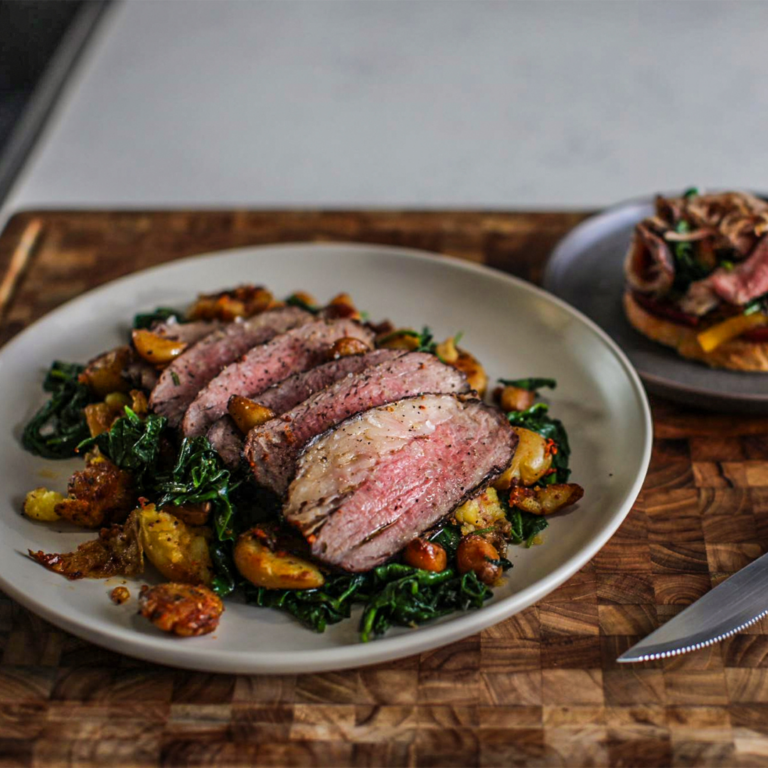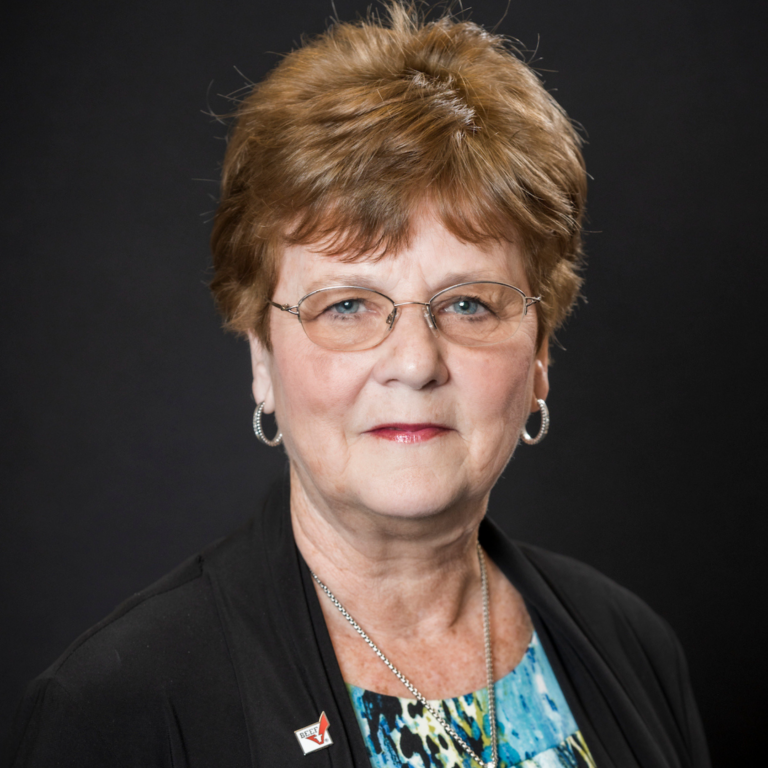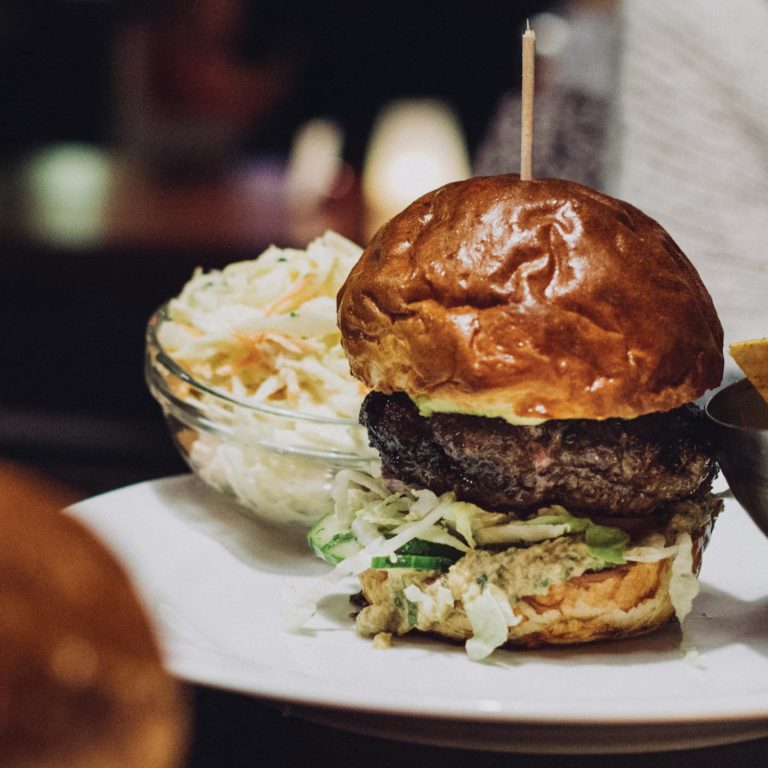Producers “Rev Up” Beef Demand at the Daytona 500
If Kent Robertson wasn’t a NASCAR fan before, he sure is now. Robertson, a cattle dealer and beef producer from Lexington, Kentucky, volunteered his time to work the Beef. It’s What’s For Dinner. booth at the iconic NASCAR Cup Series season-opener race in Daytona, Florida, February 18-19. With beef producers from across the country present and the Beef Checkoff once again sponsoring the NASCAR Xfinity Series race – The Beef. It’s What’s For Dinner.® 300. – beef was center stage at Daytona.
Fueled by the Beef Checkoff with the support of the Federation of State Beef Councils, the Beef. It’s What’s For Dinner.® 300 race sprinted to its third year at the Daytona International Speedway. From in-person events to commercial production to social media promotion and traditional media outreach, Beef. It’s What’s For Dinner. was on the racetrack and in the national spotlight. Watch The Beef. It’s What’s For Dinner.® 300 recap video.
Claiming the Xfinity prize for the second year in a row, American professional stock car racing driver Austin Hill was greeted with a buckle and a cooler full of beef to close out a week showcasing the values of cattle ranching and beef production.
Producer Involvement
Who better to showcase the values of cattle ranching than beef producers themselves? This event is unique in having real beef producers themselves come to the race and interact with attendees, drivers and the media. For Robertson, this was his first experience with NASCAR.
His role, along with other beef producers from across the U.S., was to work beef’s booth, interact with the thousands of attendees and assist them as they tried their hands at roping, identifying the attributes of various beef cuts and asking their beef industry questions. Attendees could also sample tender brisket sliders served by beef farmers and ranchers. Additionally, campers and tailgaters who sported signs showing they were grilling beef were surprised with beef gear, from steak seasoning packets to shirts and bags.
Robertson was surprised and encouraged at the variety of people who considered themselves NASCAR fans. “When I was engaging with the people coming to our booth, they were coming from all walks of life. I met people from Portland to New York City to Switzerland to Brazil to Columbia,” he said. “I couldn’t get over how kind, patient and respectful the people were.”
Direct interaction is paramount because it allows consumers to meet the people who produce beef. “Attendees enjoyed talking about the cattle business and learning about where beef comes from,” Robertson said. “The whole experience allowed me to think back about where we are and what our business is – raising and selling cattle – and the product of that business is beef, so ultimately, our future is those people who buy beef.”
National Promotion
For those race fans not able to attend in person, a satellite media tour took the tailgate to them. Just two days before the race, award-winning Chef Ryan Clark, Tucson’s Iron Chef for three consecutive years and Executive Chef for the AAA 4-Diamond and Forbes 4-Star Hotel Casino Del Sol, was live from the track for interviews with TV and radio stations across the country. During those interviews, he shared beef tailgating recipes along with cooking and preparation tips and tricks.
Finally, the Beef. It’s What’s For Dinner. brand was also showcased nationwide through various advertising efforts before and during the race. In addition to signage on the racetrack, commercials showcased beef to a global audience on the FOXSports1 television network. Ads were also featured on various digital platforms, and billboards could be seen at Daytona International Airport as well as along the highway approaching the speedway. On average, these efforts reached consumers six million times.
A Checkoff Investment
“We have to keep reintroducing beef to people, and while many already love it, we have to keep reminding them it’s there,” Robertson said. “And the Beef. It’s What’s For Dinner.® 300 is one way to do it in a grand fashion.”
As a beef producer who has been involved with the Kentucky Beef Council for seven years, Robertson is familiar with a common question he often hears from his fellow producers: “Where do all our Checkoff dollars go?” Those producers are concerned that they don’t see many advertisements for beef as they go about their daily lives. His go-to answer is this: “I always ask them, ‘Do I have to sell you on the fact that you would enjoy a steak?’ When the answer is typically no, I respond with, ‘Then why would you expect to see every bit of Checkoff advertising?'”
The Beef Checkoff works to be as efficient and effective with producer dollars as possible. To do that successfully, it invests in hyper-targeted promotion efforts to reach consumers who aren’t fully aware of beef’s great taste and nutrition. This strategy means many producers don’t see Checkoff-funded programs and efforts directly, because they already love beef and know about its many benefits. However, the Checkoff’s Producer Communications Program ultimate mission is to inform producers about the positive impact of Checkoff-funded efforts. Overall, the Cattlemen’s Beef Board dedicates approximately 4.3 percent of the Checkoff’s budget to this program.
“I was originally one of those people who questioned where Beef Checkoff money was going,” Robertson said. “But after I got on the Kentucky Beef Council and got to see all of the cool promotions and exactly where the money is going, I could see it’s money well spent.”
To learn more about the Beef Checkoff funds and how they are distributed, visit: BeefBoard.org/Beef-Checkoff-Funds/
The Beef Checkoff program was established as part of the 1985 Farm Bill. The checkoff assesses $1 per head on the sale of live domestic and imported cattle, in addition to a comparable assessment on imported beef and beef products. States may retain up to 50 cents on the dollar and forward the other 50 cents per head to the Cattlemen’s Beef Promotion and Research Board, which administers the national checkoff program, subject to USDA approval.































































